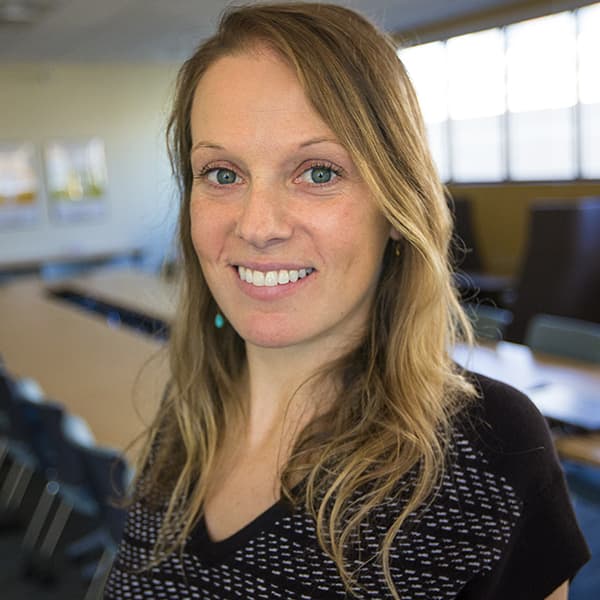Advertisement
Nari Ward Exhibit At Boston's ICA Captures Tension Of Immigrant Experiences

Life often inspires art, and art, in turn, often reflects society.
In a time of divisive political discourse, especially around immigration, an art show currently featured at Boston's Institute of Contemporary Art opens up a space for dialogue.
The exhibit offers museum-goers a glimpse into the naturalization process and what it means to be, and to become, American.
Processing Photos, Processing Experiences
One of the first things you notice when you enter "Nari Ward: Sun Splashed" is a steady beat wafting out from underneath a green awning. It's a type of Jamaican folk music called mento. The sound activates your senses right from the beginning and sort of suggests that this is a living exhibit, one that invites you to take part.
Several pieces speak directly to the artist Nari Ward's own experience as an immigrant to the U.S., including a piece called "Naturalization Drawing Table." It's a permanent part of the show, but it's only activated a few evenings a month. The work is meant to simulate what it's like to become a U.S. citizen.
Partitioned off from the rest of the display, people wander over, checking out what's behind the wall. Museum staffers explain it's part of the exhibit, folks agree to take part and then the process begins:
"OK, please step forward to line one and wait for your photo to be taken," says one staffer.
"Step against the wall. Please remove any jewelry from your right ear and please take off your glasses," orders another.
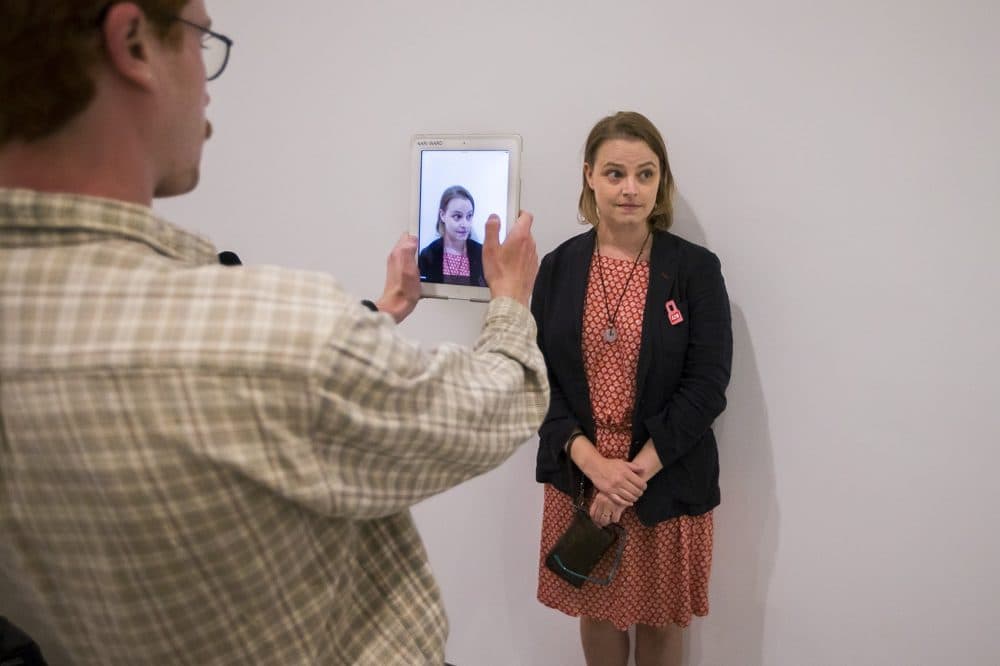
The workers continue delivering instructions with not so much as a grin. Your photo is taken, you're shuffled around a bit from one line to the next, and there's a form to fill out, designed by the artist. ICA staff who have been trained as notaries document the process with an official signature. Your picture then joins a collage of others and becomes part of the traveling exhibit.
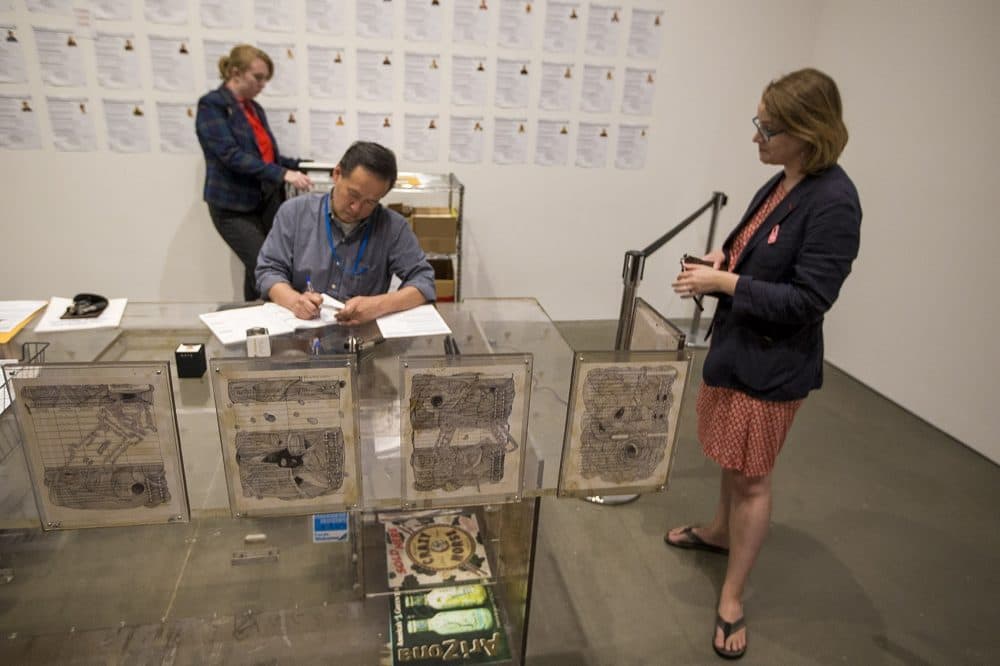
The whole thing feels a little awkward, by design.
"Yea, I wasn't really sure where I was supposed to be standing and what I was supposed to be doing," says Andrea Goetschius, of Norwood.
"In that way, it was really similar to the DMV," she adds with a laugh.
After having a few moments to reflect, Goetschius says the artwork took on a personal meaning. She says the naturalization table was more powerful than she was expecting.
"I have a family member who's going through the naturalization process now, or would like to, he's applying," she says, "and just thinking about how high the stakes are for him and, I'm a little bit shaky actually."

Art That Plays With The Tension Around American Identity
When the ICA's curatorial team first saw Ward's show almost two years ago in Miami, they knew they wanted it in Boston. Curatorial Associate Jessica Hong says given the country's current conversations about immigration the show feels especially of the moment.
"Of course, you know, with the political climate it kind of did take this additional resonance which we felt was an incredible, incredible opportunity to really engage in these, you know, difficult but important dialogues," Hong says.
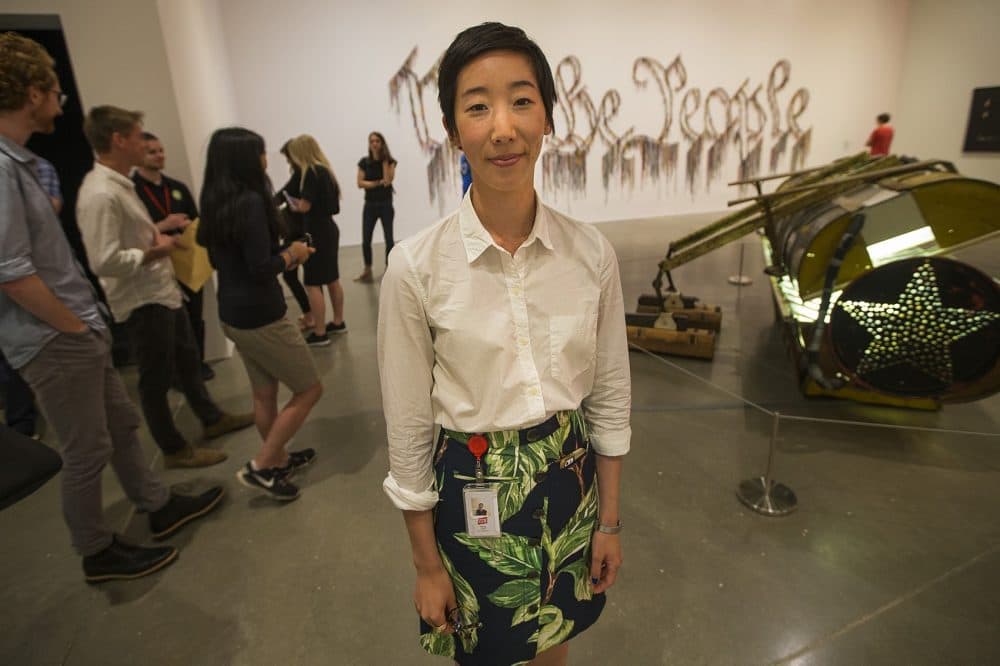
And that's exactly the vision of Ward, the artist, who says dialogue is the ideal outcome of this show.
"I think that's the key part, that any of the objects that I create, is really how to bring up an individual experience — an individual kind of point of view — but then how to create a space for everybody's experience or everybody's engagement to be just as valid," he explains.
Some of the pieces in the show were made more than 10 years ago, so the conversations they inspire today are different than they may have been when the artwork was created. But Ward says that's kind of the point, to keep challenging individual perspectives and assumptions around a number of topics, including immigration.
Ward and his family emigrated from Jamaica when he was 12 years old. He spent most of his life in the U.S. as a legal permanent resident, but several years ago he decided to pursue U.S. citizenship. Ward says it was a process marked by both anxiety and hope.
Advertisement
"That is in the work as well," he says, "that transition and that notion of feeling connected to a kind of American identity but then still feeling a little bit apart."
Many of Ward's pieces play with that tension around American identity, specifically the piece, "We The People," as in the first phrase of the U.S. Constitution.
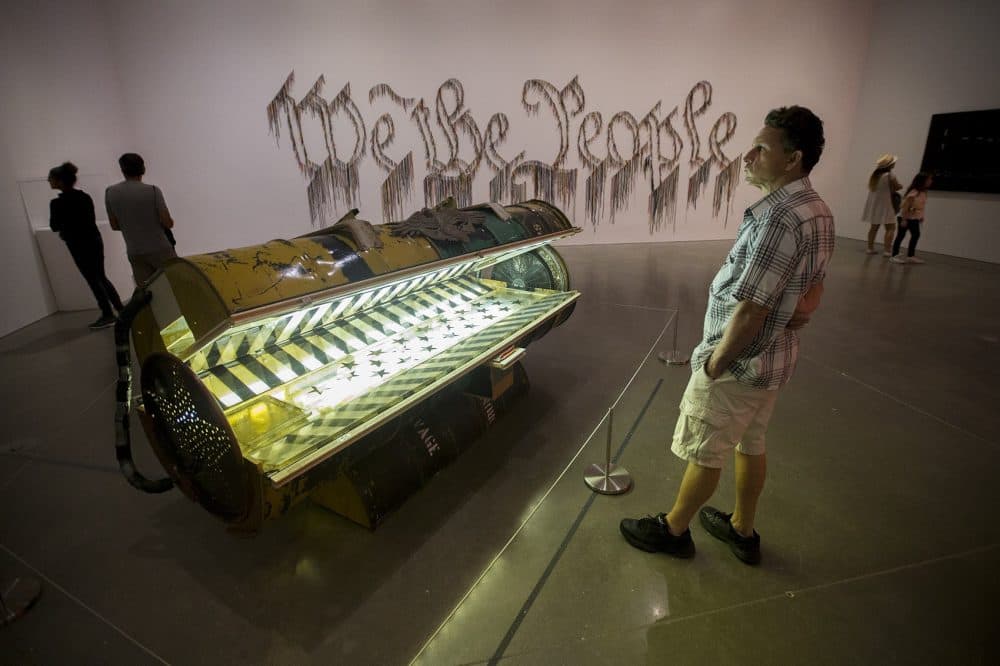
Hundreds of shoelaces hang at different lengths along an entire wall of the exhibit hall, spelling out the words. At a distance, the phrase is clear but the colors are muted and the actual material is difficult to discern. But take a few steps closer and threads of bright green, purple, and red — all of these individual colors — begin to pop, as the words themselves dissolve. Hong says that shift in imagery is intentional.

"The placement of your body is really important and the different perspectives that one were to have, perhaps suggesting that democracy is not visible for everybody or the importance and the need to have multiple perspectives in society," she says.
A visitor, Najila Al-Shanbarry, takes her time with this piece. She notices the different lengths of shoelaces, perhaps representing the varying time that different immigrants have spent in the U.S., she wonders.
"When I look at the actual design of this installation," Al-Shanbarry says, "the colors to me represent the diversity of the people of this country. I think it says so much."
A dual American and Saudi citizen, Al-Shanbarry grew up in Cambridge but now lives and works in Saudi Arabia. She says she was drawn to this piece.
"It's not just the colors themselves that attracted me to it, it's the actual statement that it's making. It's making a statement, and it's very inclusive. It's very inclusive," she says.
Perhaps not even the artist could have envisioned the significance of feeling included when he designed the piece six years ago.
More photos from the exhibit:

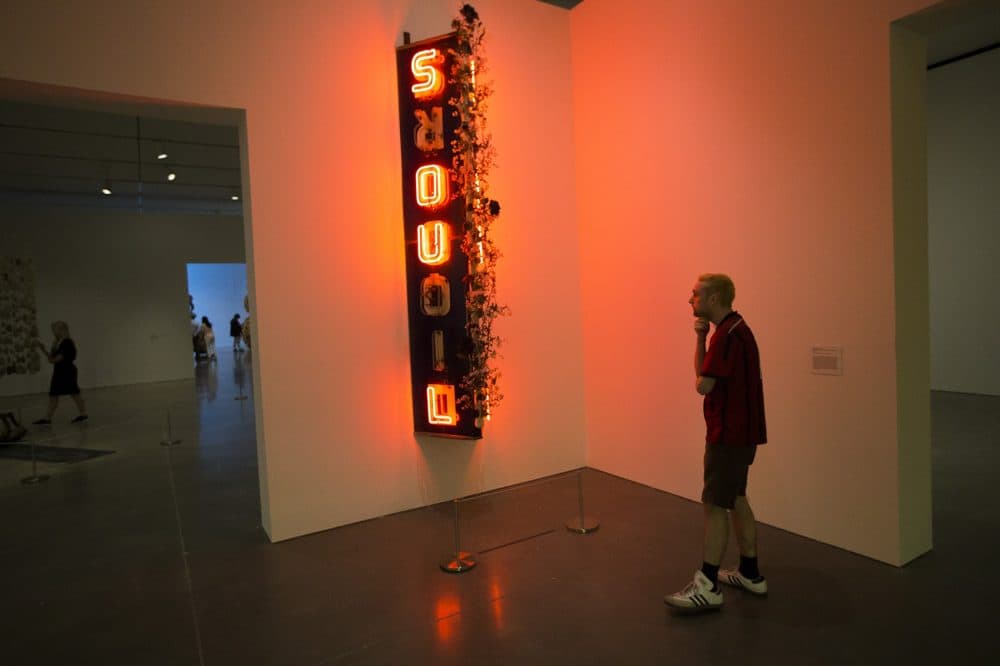
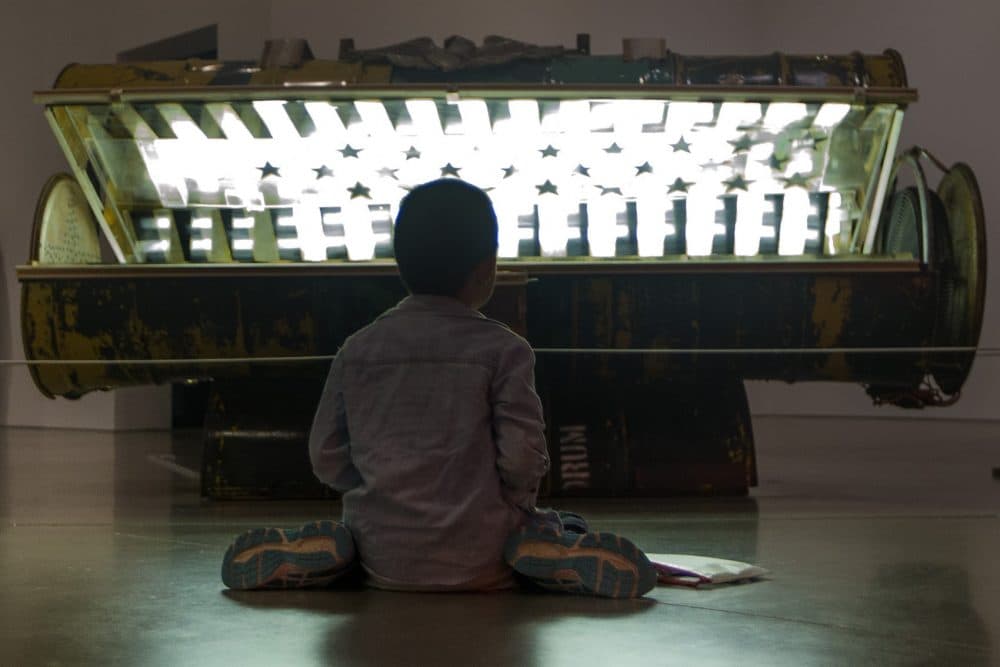
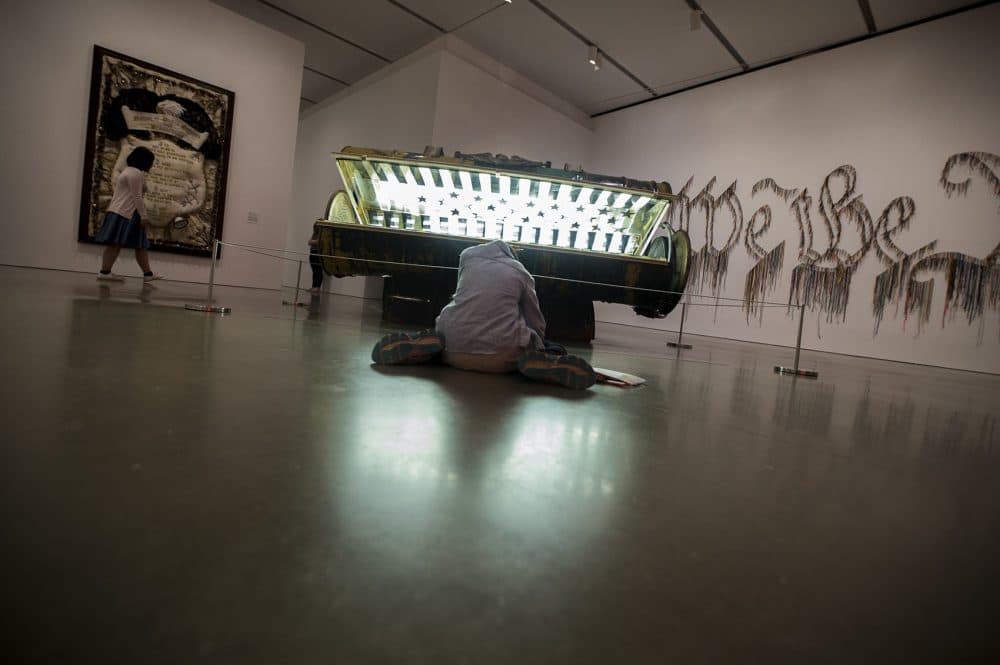
This segment aired on June 22, 2017.
